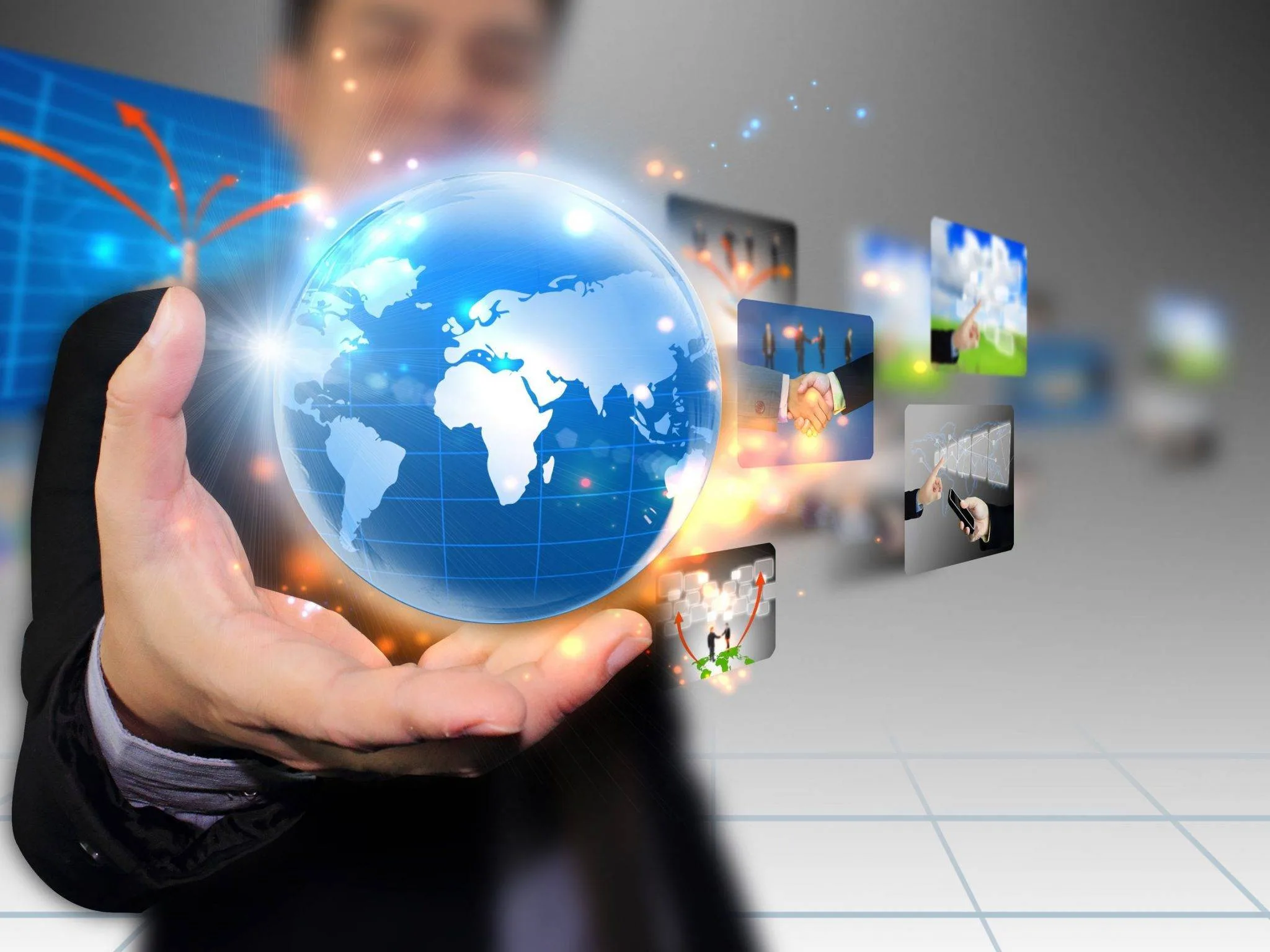Today’s world is going through a transformation and one of the most important of these changes is the impact that the world of technology has on our lives.
This is because technology is becoming a larger part of every aspect of our lives and this includes the way in which we communicate, interact with other people and the products that we use day to day.
It seems as though technology is able to do more to take away the little things from our lives and leave only the bigger and better things standing.
Technology has also become a part of the way in which we work and this is very beneficial to the world as a whole. The more efficient and productive in an office is the happier its employees will be.
The same goes for the business world as a whole. If the modern office uses the most up to date technology than the workers are going to be much happier and healthier on the whole.
Now lets talk about how technology is affecting our lives. I believe one of the main problems for many people is the loss of personal control over the use of technology in their lives.
The reason for this is that the internet, television and telephone have become so integrated into daily life that it has become a part of our lives. For example if you have a problem at home you can simply go on the Internet and read about ways in which to fix the problem.
Then, if you find the information you need to resolve the problem then you can log onto the Internet and use the telephone to make your telephone calls. The end result is that you are using technology to solve the little problems rather than the big problems that you might face.
- Communication Revolution:
One of the most evident impacts of technology is the revolution in communication. The rise of social media platforms, instant messaging apps, and video conferencing tools has transformed the way we connect with others. Individuals can now communicate globally in real-time, fostering new relationships and bridging geographical gaps. However, concerns about privacy, misinformation, and the potential for social isolation have also emerged as challenges.
- Digital Transformation in Workplaces:
Technology has reshaped the landscape of work, with businesses adopting digital tools and automation to enhance efficiency and productivity.
Remote work has become more prevalent, allowing employees to collaborate seamlessly across borders. While this shift offers flexibility, it also raises issues related to work-life balance, digital fatigue, and the need for robust cybersecurity measures.
- Education Evolved:
The education sector has witnessed a paradigm shift due to technology. E-learning platforms, virtual classrooms, and educational apps have revolutionized the way knowledge is disseminated. However, the digital divide remains a concern, as not everyone has equal access to technology, hindering the potential benefits for all.
- Healthcare Innovation:
Advancements in technology have brought about significant improvements in the field of healthcare. Telemedicine allows patients to consult with healthcare professionals remotely, enhancing accessibility.
Wearable devices and health apps enable individuals to monitor their well-being actively. Despite these advantages, ethical considerations, data security, and the digital divide in healthcare access need to be addressed.
- Entertainment at Our Fingertips:
Technology has reshaped the entertainment industry, offering a myriad of options for content consumption. Streaming services, virtual reality experiences, and interactive gaming have become integral parts of our leisure time. However, concerns about digital addiction, privacy, and the impact of excessive screen time on mental health have emerged.
- Environmental Implications:
While technology has provided solutions to many challenges, it also poses environmental concerns. The production and disposal of electronic devices contribute to electronic waste, and energy consumption associated with technology can have ecological consequences. Sustainable technology practices and innovations are essential to mitigate these environmental impacts.
Embracing Technology’s Impact on Our Children’s Lives
As we adapt to this digital evolution, it’s imperative to examine how these technological advancements affect the lives of our children. This article delves into the multifaceted impact of technology, acknowledging its potential pitfalls while celebrating the opportunities it presents.
- Educational Revolution: Technology’s transformative role in education cannot be overstated. Virtual classrooms, interactive learning apps, and digital tools are revolutionising how our children engage with knowledge, fostering curiosity and critical thinking.
The excitement with which children embrace gamified learning apps reflects a promising shift towards a more interactive and personalized educational experience. - Social Connectivity: Technology has redefined the social landscape for our children, offering platforms to connect, share experiences, and build friendships. While this fosters a global perspective and inclusivity, concerns arise regarding the potential negative impacts of excessive screen time and the prevalence of cyberbullying.
By promoting a balanced approach to social connectivity, we can help our children navigate the digital social sphere responsibly. Encouraging open communication and teaching them about online etiquette can safeguard their emotional well-being in an ever-connected world. - Emotional Well-being: The digital era introduces challenges to our children’s emotional well-being, ranging from the curated reality of social media to the pressures of online validation.
To counteract this, fostering open conversations about their digital experiences, teaching digital literacy, and establishing healthy screen time boundaries become crucial elements in promoting a positive online environment. - Unleashing Creativity: Technology provides an expansive canvas for our children to unleash their creativity, from digital art to coding projects. This avenue for creative expression allows them to explore and develop talents in ways unimaginable in previous generations.
However, as we celebrate their digital creativity, we must also be mindful of the potential consequences. It is essential to guide them toward a balance between online and offline creative pursuits, ensuring they engage with technology in ways that foster personal growth and development. - AI and Employment Concerns: While celebrating the benefits of technology, we cannot ignore the potential challenges, particularly those related to the rise of artificial intelligence.
The concern over job displacement looms large, raising questions about the future job market our children will face. Striking a balance between embracing technological advancements and preserving essential human skills becomes crucial to navigating this landscape.
Moreover, the integration of AI in various aspects of life raises concerns about losing essential lessons in humanity. Balancing technological progress with the preservation of empathy, ethical values, and human connection is vital to ensuring our children grow into well-rounded individuals in an increasingly automated world.
The Acceleration of Technology: Are We Moving Too Fast?
The rapid evolution of digital innovation has undeniably transformed the way we live, work, and communicate. However, concerns are growing about the potential consequences of this breakneck speed of progress.
The Acceleration Dilemma:
As technology continues to advance, the time between major breakthroughs seems to be shortening. From artificial intelligence and robotics to biotechnology and quantum computing, the pace of development is challenging our ability to adapt.
Critics argue that this acceleration may outstrip our capacity to understand the ethical, social, and environmental implications of emerging technologies.
Ethical Quandaries:
One of the primary concerns is the ethical dimension of rapidly evolving technologies. The development of artificial intelligence, for example, raises questions about job displacement, bias in algorithms, and the potential misuse of powerful tools.
As technology advances, the need for robust ethical frameworks becomes increasingly urgent to ensure responsible innovation and prevent unintended consequences.
Social Impact:
The impact on society is also a key consideration. The rapid adoption of new technologies can lead to social divides, as some groups struggle to keep pace with the changes.
Issues such as the digital divide, privacy concerns, and the impact on mental health are being thrust into the spotlight as technology becomes an integral part of our daily lives.
Environmental Consequences:
Furthermore, the environmental impact of technological progress cannot be ignored. The production and disposal of electronic devices contribute to e-waste, while the energy consumption of data centers and high-performance computing raises questions about sustainability. Balancing technological advancement with environmental responsibility is a critical challenge for the future.
The Need for Regulation and Reflection:
As we navigate the fast-paced world of technology, there is a growing consensus that regulatory frameworks must evolve in tandem. Striking a balance between fostering innovation and mitigating potential harm requires proactive measures.
Governments, industries, and the public must work collaboratively to establish guidelines that ensure the responsible development and deployment of new technologies.
A Call for Public Discourse:
Experts and advocates emphasize the importance of public engagement in discussions about the direction of technological progress. Informed and inclusive conversations can help shape policies that address societal concerns while harnessing the benefits of innovation.
What Will Happen In The Year 3000?
By the year 3000, technology will have evolved exponentially. Artificial intelligence will have reached unprecedented levels of sophistication, enabling machines to perform complex tasks and make decisions at a level comparable to or even surpassing human intelligence.
It’s been suggested that transportation will use biofuels, pedestrians will have an easier time, cities will be quieter and less polluted, unemployment will increase due to machines taking over jobs, and the world government will prevent wealth accumulation and promote competitiveness and balance.
Technology Growth Statistics
The following are some eye-opening stats handpicked from the most reliable sources:
- Globally, there are about 1.35 million tech startups around the world.
- The number of smart devices collecting, analyzing, and sharing data should hit 50 billion by 2030.
- The global internet penetration rate in 2022 is around 63%.
- The computing and processing capacity of computers hits double figures every 18 months.
- The world will produce 463 exabytes of data by 2025.
- By 2030, 500 billion devices will be connected to the internet.
- 5 billion people use the internet.
How Fast Is Technology Advancing in 2024?
1. 63% of people around the world use the internet.
There are about 7.9 billion humans on the planet. Approximately 5 billion of them use the internet, according to technology adoption statistics for 2022.
That rate has grown by 4% since 2021. That’s an addition of 192 million new users since last year.
2. $183.18 billion – that is how much the web hosting services marketplace is expected to have generated by 2026.
In 2017, the global web hosting market had a value of $32.12 billion, and in 2018 that figure rose to $60.90 billion. By Maintaining a Compound Annual Growth Rate (CAGR) of 15.1%, experts predict that the web hosting industry will be worth more than $100 billion in a few years as a result of global tech market growth.
3. There are 5.32 billion unique mobile phone users.
Over the last year, the total number of unique mobile users has grown by 95 million. According to technology growth statistics, that brings it to a total of 5.32 billion in 2022.
That’s a growth of 1.8% since last year.
We’ve also seen millions of people upgrade to smartphones. For every five cell phones, four are smartphones.
4. By 2025, there will be 75 billion connected devices in the world.
In 2025, the number of Internet of Things (IoT) will be thrice that of 2019. Think slow cookers, wearable technology like smartwatches, smart meters, smartphones, etc.
The technology has become so popular that industry experts predict that every consumer will own about 15 IoT devices by 2030!
5. Users query Google about 8.5 billion times per day.
When it comes to how fast technology is growing, people do over 8.5 billion searches daily. That’s an astronomical number.
To bread down the numbers:
Every single second, the search engine giant gets 99,000 searches. That results in close to 9 billion queries each day on average.
6. The need to reach new customers is the primary factor pioneering technological growth in the last few years (46%).
Technology adoption statistics reveal that factors such as selling new business lines (38%), overall improvement of business operations (41%), improving sales and marketing (35%), improving standard internal processes (33%), are the main drivers for tech growth.
7. By 2040, 95% of purchases will be online.
Buying over the internet is so convenient because you can get whatever you need from the comfort of your home regardless of time or location. According to technology growth stats, ecommerce will have grown so much that buyers will conduct almost all of their purchases online in the next two decades.
8. Over 4.65 billion people use social media.
According to technology statistics for 2022, roughly 58.7% of the world’s population, use social media. Since 2021, around 326 million new people have joined networking websites. In addition, over 90% of people that regularly use the internet visit social sites.
AI and Machine Learning Statistics
Technology stats and facts show that AI remains one of the most sought-after technological advancements pioneering technological growth around the world. Read on to find out some amazing stats on how AI and machine learning are impacting society.
9. Google Translate algorithm has increased its efficiency from 55% to 85% following the implementation of machine learning into its translation services.
Google Translate is a service developed by Google to help customers translate text and websites to any desired language. Before the introduction of AI, it would typically take more time to translate a series of words in a foreign language, as the process is done one text at a time.
10. The global machine learning market is expected to reach $20.83 billion in 2024.
Tech growth stats indicate that machine learning is currently one of the most popular and most successful sub-functions of AI.
It should come as no surprise that the market is growing in value. Worth around $1.58B in 2017, it is expected to reach $20.83B in 2024, growing at a CAGR of 44.06%.
11. The Compound Annual Growth Rate (CAGR) for AI will be 42.2% by 2027.
Stats on how fast technology is advancing reveal that the artificial intelligence market was worth $10.1 billion in 2018. In 2019, that value increased to $39.9.
As you can see, there has been positive growth over the years, which is likely to continue.
Giant tech firms have been pouring big bucks into research and development, the reason why technology keeps advancing every day. Examples of big names investing heavily in this sector include Facebook, Amazon, Microsoft, Google, and Apple.
Industry players predict a CAGR of 42% between the period 2020 to 2027.
12. AI will replace around 85 million jobs in the US by 2025.
Does automation benefit the ordinary citizen?
The pandemic led to massive job losses, leaving one in every four adults in serious financial difficulty. They had issues footing their bills.
That led to 33% of Americans using their life savings to cater for their expenses. Others had to borrow loans and now have huge debts.
And it looks like the labor market hasn’t seen anything yet.
AI statistics show that its adoption will lead to job losses to the tune of 85 million by the end of 2025.
Experts predict that there will be 95 million job openings because of artificial intelligence. By 2025, humans and machines will strike a balance of 50-50 when it comes to working.
13. Worldwide, only 37% of organizations have incorporated AI into their business.
Although the figure may not be high enough, it is still a significant rise from what we had in 2015 (about 270% increase).
14. Artificial General Intelligence (AGI) has a 50% chance of rising to 90% by 2075.
AGI mimics human intellect. Think cooking or styling hair with precision.
Experts predict that there are high chances that in most work environments in 2075, nine out of 10 companies will use AGI technology.
15. IT Operations professionals are in high demand in 2022.
Technology adoption stats show that 60% of IT businesses are looking to hire IT Operations engineers, and 48% are recruiting for developer positions.
16. The fully and semi-automatic car market will be worth $26 billion by 2030.
Experts estimate that the number of connected cars in Europe, China, and the US will be about 470 million by 2025. Technology statistics show that the vehicles will generate data worth $750 billion.
While that sounds impressive, we should think about the security aspect. The information that the technology will derive could land in hackers’ hands instead of genuine parties like manufacturers or vendors.
Summary – Conclusion:
The world of technology is a dynamic and transformative force that continues to shape our lives in profound ways. While it brings about unprecedented conveniences and opportunities, it also raises ethical, social, and environmental challenges that must be addressed.
Projections suggest a global count of 38.6 billion Internet of Things (IoT) connected devices by2025, marking a notable surge from 2018’s 22 billion. Anticipations extend further, with expectations reaching 50 billion by the year 2030.
Striking a balance between harnessing the benefits of technology and mitigating its negative impacts is crucial as we navigate the ever-evolving landscape of the digital age.







